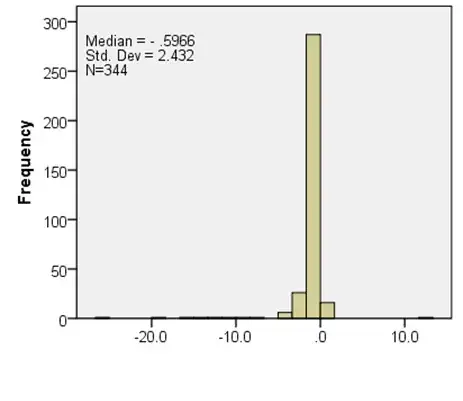It is a mistake to suppose that there is a good statistical solution that can be identified regardless of what the science (or economics, or whatever) is here. Why are you calculating a ratio in the first place? Is that essential, standard, conventional, or just a way of combining variables that seemed possible? Would the difference between variables make sense too?
If the denominator could be zero, at least in principle, taking the ratio is a bad idea. It may be your good fortune that you have no zeros, but it would still be the wrong thing to do. In any case, the ratio can be very sensitive to values near zero. That may be how your outliers arise.
Transformations that can be applied to variables that may be positive or negative include the cube root, the arctangent and the inverse sinh function.
They are all likely to be somewhat ad hoc, although there can be dimensional arguments for the cube root, e.g. if you are using volumes (in the physical sense).
Depending on your software, you might need to implement cube roots as something like
sign(y) * abs(y)^(1/3)
or the equivalent in your software. Most root functions take logarithms first and fall over with negative arguments, and they miss the fact that odd integer roots are perfectly well defined for negative values (e.g. the cube root of -8 is -2).
atan() and asinh() (or whatever notation is used by your software) pull in tails more than the cube root. The choice of function for transformation may be more a matter of psychology or sociology, if inverse trigonometric or hyperbolic functions are too exotic for your likely readership, or not something you care to explain.
See also work on the so-called neglog transformation. That was named in www.jstor.org/stable/3592674 If you don't use that transformation, the paper is useful as one of the few discussions of this problem that appear to exist. Almost all the literature on transformations seems to presuppose positive or at least non-negative variables.
